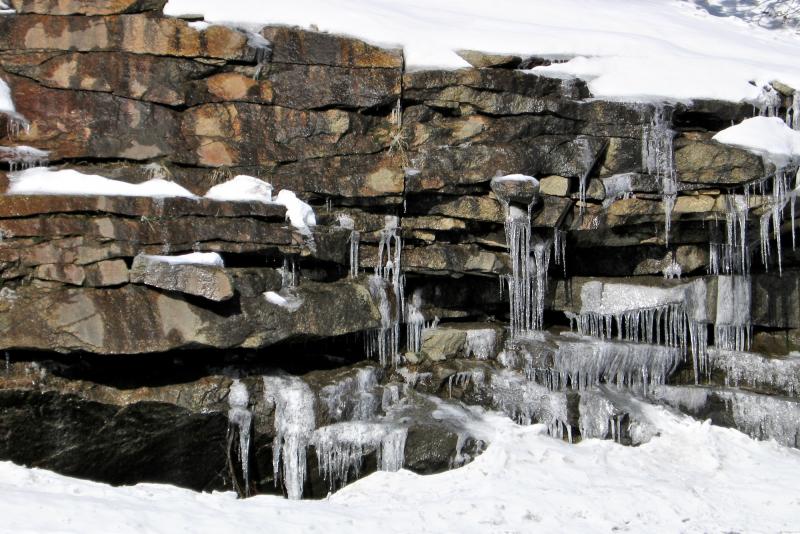This shot was taken on Highway 88, the road up to Kirkwood. There's a turnout with a beautiful valley view. Lots of snow and trees and a little bit of a lake (though in the winter it's all covered with snow) on the south side of the road. I've seen lots of cars parked there, people outside shooting the landscape. The beauty I saw is on the other side of the road. Here's where CalTrans (or whoever) dug away at the mountain so there's a wall of rock which, very rarely, is revealed so that you can see the icicles forming as the snow melts and the water falls. The rest of the year, this wall is either covered with snow or completely bare.
Photography in the snow is not as easy as you might think. There are many things going for you (lots of light, beautiful scenery) but the fact is that there's TOO much light... well, actually it's just the wrong type of light. Up in the mountains there is less atmosphere to diffuse the sunlight, and at the same time, the snow and ice on the ground tends to reflect the light right back at you. You get very harsh light. Sharp light. LOTS of contrast.
Have you ever taken a photograph in the snow with a color camera, but when you look at the print, it looks black-and-white? There's SO much contrast in the mountains, it's VERY difficult to bring out any detail.
Let's think about this for a second. It brings up an interesting concept that I'd like to discuss: Dynamic Range. When you see things with your eyes, you have the benefit of pretty good dynamic range. Your eyes can see detail in shadows and detail in the bright areas, particularly if you sit there for a while and let your eyes adjust. Depending on how long you wait, your eyes can see a contrast ratio of tens of thousands to one. It can even see as great as a million to one, but you have to sit there for about half an hour.
A camera isn't that good. Generally digital and printed images only give you contrast ratio of a few hundred to one. If you're looking to buy an LCD TV or monitor, take a look at the advertised contrast ratio. If the product has a high contrast ratio, the blacks will look darker and the whites will look brighter. I've seen LCD screens with 1000:1 contrast ratio and higher. Not as good as your eyes, but it'll do for now.
Take a look at this shot. There's bright snow and there's dark shadows. Photoshop helps with that fantastic adjustment function called "Shadow/Highlight". With that, I can make the shadows lighter and the highlights darker. It's not as pretty as in person, but it'll do for now.

